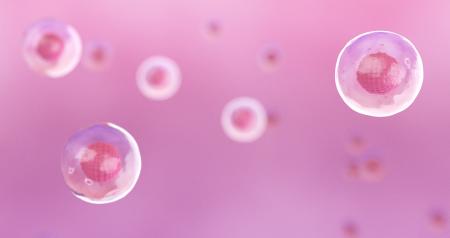Tuesday, July 01, 2025
Many clinics worldwide provide human stem cell therapy, but what are the actual differences between the types of stem cells available?
There are many answers to this question but all experts would agree on the following important facts about stem cell therapy in the world:
Availability of Stem Cells
Harvesting adult stem cells, like mesenchymal stem cells (MSC), requires expert staff and expensive technical equipment. Whether they come from the patient’s own tissues or from an umbilical cord source, their source availability and expansion are limited. The cord blood of one newborn, for example, contains an average of 1.8 million undifferentiated cells (MSC). These stem cells can be cultured and expanded 20 to 50 times until they lose their stem cell nature and differentiate into one of the eight types of somatic cells they can become. The risk of contamination for these cells is high also. For every 200 million MSC, a new source must be found and evaluated for pathogens before culture. All these steps and inconsistencies in the success of isolation add to the cost of these MSC. This is probably why patients sometimes have to pay up to $10,000 for a single treatment. In contrast, a single line of pluripotent stem cells is harvested once, and can be expanded millions of times over many years, treating thousands of patients with only one original blastocyst.
Quality of Signals
Yet, the true challenge is the quality of the information that these stem cells carry. By nature, mesenchymal stem cells from adult are much more aged and already differentiated to signal repair in only eight tissue types. Their translational potential is more limited than a pluripotent cell. They are effective for bones and muscle (umbilical) and skin (adipose) but do not have the regenerative reach to all 220+ tissue types of cells that our body needs for a comprehensive tune-up. If the MSC are harvested from the patient’s adipose tissues, they have the same age as the patient and will not add youth to the recipient’s metabolism. If the MSC come from umbilical cord blood, they will be younger than stem cells from adipose tissue but still very limited in the signals that they send - their mission to communicate mainly with bones, skin, and muscles. This is where Embryonic Stem Cells shine — in their youthfulness and in their secretory reach for whole body repair and rejuvenation. The signals sent by pluripotent embryonic stem cells to the recipient’s cells are not limited to any tissue. The genes of pluripotency that are known to restore youth in all tissues will release their unique miRNAs and help the surrounding cells to restore their young metabolism.
It is important to know also that each batch of MSC will release different signals since they are coming from a different source, a different placenta or a different cord blood sample. It has been reported that these MSC batches are not all equally immunosuppressive or equally potent, which means that the results observed after their application are not reproducible. Instead, by using the same line of pluripotent stem cells, coming from the same source for years, the results are much more reproducible and the treatment more predictable and reliable.
Frequency of Clinical Application
Pulse Treatment vs One Single Injection?
The number and pace of applications is another important point to understand about stem cell medicine. A one-time injection helps somewhat, but research is more and more clear that it is the regular pulsing doses of pluripotent signaling that make the most significant difference - day after day, week after week, sequential applications over a period of time. Depending on the level of cell degradation to reverse in the patient, the number of applications will vary. Mild conditions may be reversed after only 12 applications. For more advanced neurodegenerative diseases like dementia or MS and ALS, 24 applications are recommended along with side treatments that will help restore function.
Translational potential
Repair or Reprogramming?
There are many stem cell types. Adult stem cells, like the mesenchymal stem cell, are well known for their joint tissue repair capacity. They contain translational potential that is more reparatory (and less reprogramming) focused. What does this mean? Clinical application of mesenchymal stem cells types serves to repair damage and tackle degeneration this way. Mesenchymal cells are specialized cells that secrete angiogenic factors, neurotrophic factors, anti-fibrotic factors and so on. Their therapeutic potential is focused on fixing the damage. These types of cellular therapies are great for joint repair and injury mediation.
Functional and more systemic conditions, like cardiovascular diseases, arterial diseases, neurodegenerative diseases, ophthalmic diseases and other degenerative diseases do better with partial reprogramming therapeutic effect of pluripotent stem cells. Translational potential of pluripotent cells includes the Yamanaka reprogramming factors. These turn back the clock on the tissues they reach, all types of somatic cells (epithelial cells, endothelial cells, smooth muscle cells, blood cells, bone marrow cells and so on).
Pluripotent stem cells have especially an affinity for treating neurodegenerative conditions. Neural progenitor cells (native neural stem cells) are activated in the presence of pluripotent neurotrophic factors and reprogramming factors.
Pluripotent embryonic stem cells also have an anti tumorigenic potential, therapeutic capacity to turn cancer cells and cancer stem cells back to benign human cells. Pluripotent stem cells are the primary cells to use for systemic conditions.
We are now conducting a clinical study of Pluripotent stem cells & Plurisomes™ and their effectiveness in partial reprogramming and biological age reversal.
PSC-based cell products produced at Stemaid Laboratories are the PSC, APSC and Plurisomes™.
Autologous therapies
There are many types of autologous therapies in the world. The adult human mesenchymal stem cell versions include fat transfer, bone marrow transfer most frequently. They all have the mesenchymal translation potential, focusing on repair.
Autologous 'Embryonic stem cells' are produced at Stemaid Laboratories via nuclear transfer. These have the comprehensive and wide-ranging reprogramming potential. They also have a long safety record, unlike autologous IPSC-derived cells. No immune rejection, healthy immune responses. Autologous IPSC-derived cell therapy using human IPSCs has not been conducted in humans due to safety concerns in numerous scientific study series in mice (transgenic mice, chimeric mice).
References
1. Introduction to Stem Cell Therapy
2. In vivo partial reprogramming alters age-associated molecular changes during physiological aging in mice - Nature Aging
3. Reprogramming to recover youthful epigenetic information and restore vision - PubMed
4. In Vivo Amelioration of Age-Associated Hallmarks by Partial Reprogramming - PubMed
5. Aging, rejuvenation, and epigenetic reprogramming: resetting the aging clock - PubMed
6. Induced pluripotent stem cells in Alzheimer’s disease: applications for disease modeling and cell-replacement therapy - Molecular Neurodegeneration










